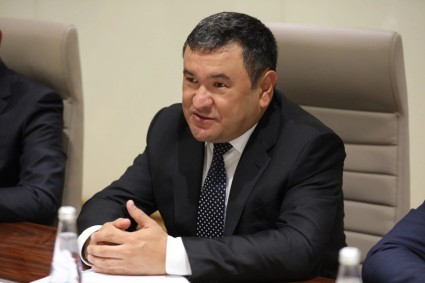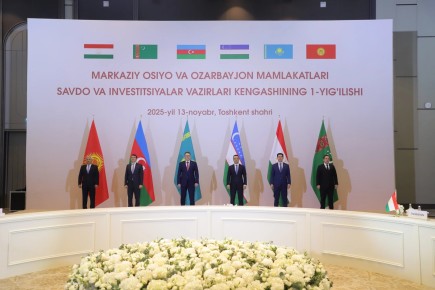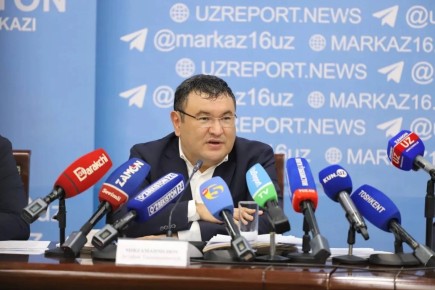The World Bank has just released its latest Global Economic Prospects report. The Institution's flagship report, which is issued twice a year, in January and June, examines developments, risks, and prospects related to the global, regional, and domestic economies.
According to the report, in 2022, growth in Europe and Central Asia (ECA) plummeted to 1.2 percent—the slowest growth among the six EMDE regions. Excluding Russia and Ukraine, growth in ECA still weakened to 4.8 percent. The slowing of growth was broad-based, including most of the region’s economies, reflecting disruptions from the Russian Federation’s invasion of Ukraine, reduced business and consumer confidence, a surge in inflation, marked monetary tightening, and energy supply disruptions.
Output fell by 20.2 percent in Eastern Europe, with contractions mainly in Ukraine, but also elsewhere in the subregion. In Central Europe and the Western Balkans, which are more closely integrated into European Union (EU) value chains, growth was dampened by steep energy price increases, energy supply disruptions, and monetary policy tightening.
In contrast, growth was more rapid in the South Caucasus and Türkiye, amid inflows of trade, migrants, and finance from Russia and Ukraine—factors that also supported growth in Central Asia. The slowdown in commodity exporters other than Russia was limited by higher global commodity prices.
Inflation remains particularly high in ECA, especially in Türkiye. While nominal wage increases have generally lagged behind price inflation, real wages dropped as much as 3.3 percent in Eastern Europe in the first half of 2022, with Central Asia and South Caucasus the exceptions.
Recent signs of deceleration in 12-month inflation rates in some ECA countries can be attributed to base effects and because of the decline in energy prices from last year’s record highs. However, core inflation remains elevated. To combat above-target inflation, 17 central banks in the region raised rates in 2022, and six have raised them further so far in 2023.
Outlook: Growth in ECA is projected to edge up slightly in 2023, to 1.4 percent; however, the outlook remains particularly uncertain owing to Russia’s invasion of Ukraine and its repercussions. Excluding Russia and Ukraine, growth in ECA is projected to nearly halve to 2.4 percent in 2023. The 1.3 percentage points forecast upgrade since January for the region is mainly because of an upward revision for Russia.
Tajikistan and Uzbekistan are expected to show the highest GDP growth in 2023 among the 23 economies across the ECA region, at 6.5 percent and 5.1 percent, respectively (see table below). They are followed by Armenia and Georgia with 4.4 percent of economic growth this year.
Regional growth is projected to rebound to 2.7 percent a year in 2024-2025, driven by stronger external and domestic demand, in a context of fading adverse growth shocks. Divergences in growth rates within the region should fade as migrant and capital flows from Russia ease, and economic growth improves in the EU.
The dual shocks of the COVID-19 pandemic and Russia’s invasion had a significant impact on the growth in the region, which is expected to remain below its potential rate in the next three years, dampened by tighter financial conditions and gradual fiscal consolidation in many countries.
Risks: Risks to the regional outlook remain tilted to the downside and include the possibility of a more intense or prolonged Russia’s invasion of Ukraine, higher inflation with tighter monetary policies, and financial sector stress. A steeper-than-expected slowdown in the euro area would also further dampen external demand for Central Europe and the Western Balkans.
The World Bank has just released its latest Global Economic Prospects report. The Institution's flagship report, which is issued twice a year, in January and June, examines developments, risks, and prospects related to the global, regional, and domestic economies.
According to the report, in 2022, growth in Europe and Central Asia (ECA) plummeted to 1.2 percent—the slowest growth among the six EMDE regions. Excluding Russia and Ukraine, growth in ECA still weakened to 4.8 percent. The slowing of growth was broad-based, including most of the region’s economies, reflecting disruptions from the Russian Federation’s invasion of Ukraine, reduced business and consumer confidence, a surge in inflation, marked monetary tightening, and energy supply disruptions.
Output fell by 20.2 percent in Eastern Europe, with contractions mainly in Ukraine, but also elsewhere in the subregion. In Central Europe and the Western Balkans, which are more closely integrated into European Union (EU) value chains, growth was dampened by steep energy price increases, energy supply disruptions, and monetary policy tightening.
In contrast, growth was more rapid in the South Caucasus and Türkiye, amid inflows of trade, migrants, and finance from Russia and Ukraine—factors that also supported growth in Central Asia. The slowdown in commodity exporters other than Russia was limited by higher global commodity prices.
Inflation remains particularly high in ECA, especially in Türkiye. While nominal wage increases have generally lagged behind price inflation, real wages dropped as much as 3.3 percent in Eastern Europe in the first half of 2022, with Central Asia and South Caucasus the exceptions.
Recent signs of deceleration in 12-month inflation rates in some ECA countries can be attributed to base effects and because of the decline in energy prices from last year’s record highs. However, core inflation remains elevated. To combat above-target inflation, 17 central banks in the region raised rates in 2022, and six have raised them further so far in 2023.
Outlook: Growth in ECA is projected to edge up slightly in 2023, to 1.4 percent; however, the outlook remains particularly uncertain owing to Russia’s invasion of Ukraine and its repercussions. Excluding Russia and Ukraine, growth in ECA is projected to nearly halve to 2.4 percent in 2023. The 1.3 percentage points forecast upgrade since January for the region is mainly because of an upward revision for Russia.
Tajikistan and Uzbekistan are expected to show the highest GDP growth in 2023 among the 23 economies across the ECA region, at 6.5 percent and 5.1 percent, respectively (see table below). They are followed by Armenia and Georgia with 4.4 percent of economic growth this year.
Regional growth is projected to rebound to 2.7 percent a year in 2024-2025, driven by stronger external and domestic demand, in a context of fading adverse growth shocks. Divergences in growth rates within the region should fade as migrant and capital flows from Russia ease, and economic growth improves in the EU.
The dual shocks of the COVID-19 pandemic and Russia’s invasion had a significant impact on the growth in the region, which is expected to remain below its potential rate in the next three years, dampened by tighter financial conditions and gradual fiscal consolidation in many countries.
Risks: Risks to the regional outlook remain tilted to the downside and include the possibility of a more intense or prolonged Russia’s invasion of Ukraine, higher inflation with tighter monetary policies, and financial sector stress. A steeper-than-expected slowdown in the euro area would also further dampen external demand for Central Europe and the Western Balkans.
Remittances from Russia could also grow more slowly than projected this year, especially in Central Asia and South Caucasus.
An escalation of the invasion of Ukraine could increase the risk of energy insecurity, as the region continues to be vulnerable to supply disruptions and its dependency on Russia.
Intensification of geopolitical tensions in other parts of the region, as well as greater dislocations from adverse weather events associated with climate change, are also downside risks.













